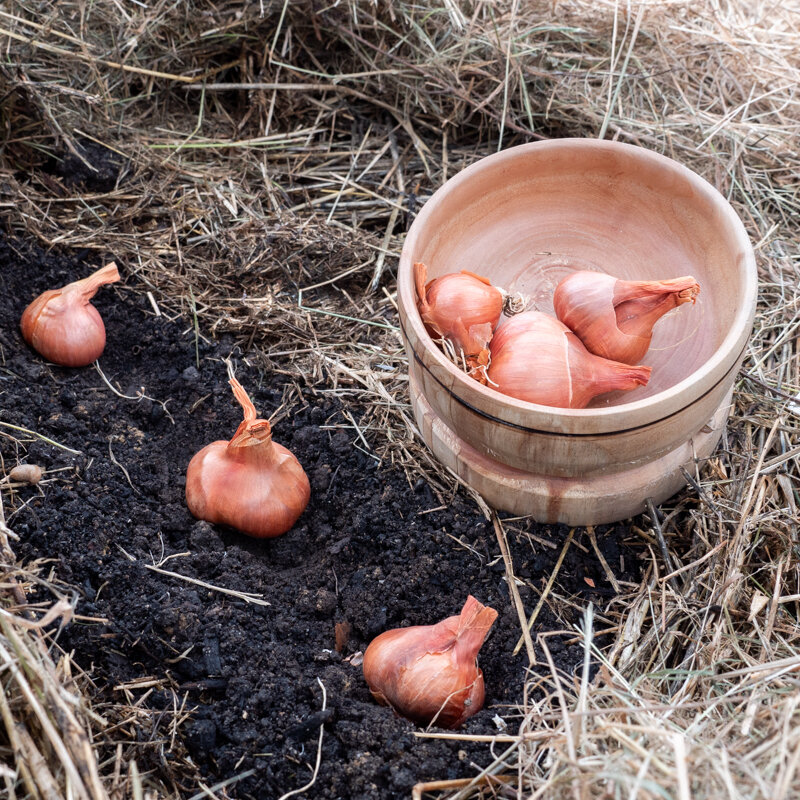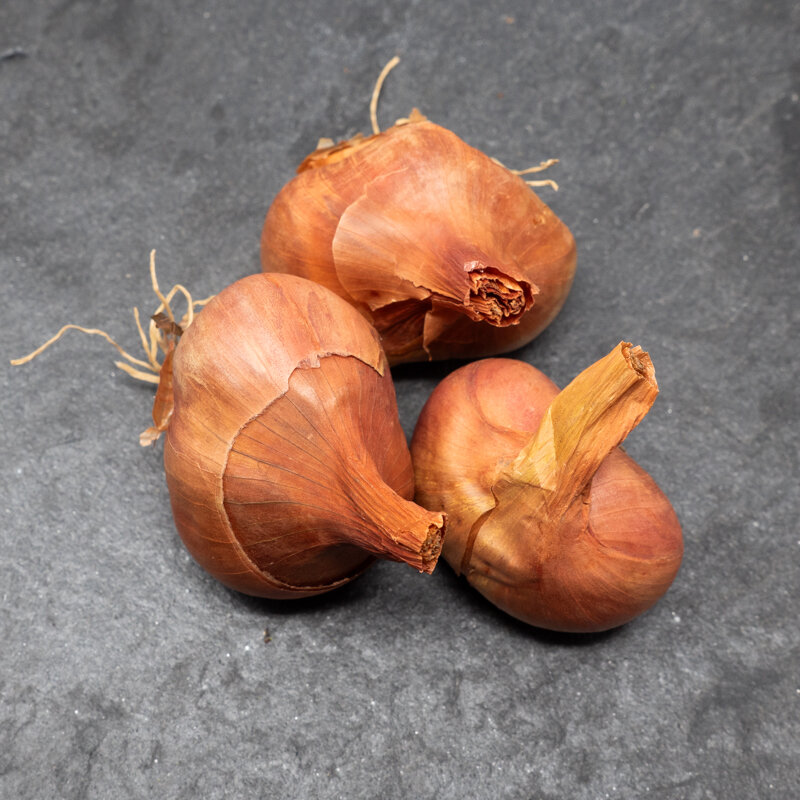Shallot Bulbs "Red Sun" AB - 250 g - Allium cepa
Shallot bulbs will be available for sale in mid-October. You can create an alert to be informed by e-mail as soon as they are available.
Red Sun" is a hardy, round shallot with beautiful, round, copper-red bulbs and delicious pink-purple flesh. Productive and long-lasting, this variety is renowned for its excellent taste.
- Size 15/35
- Produced in France
- Organically grown
Where and when to plant shallot bulbs?
Shallots enjoy all types of soil, as long as they are well aerated and drained, and amended the season before planting, as well as sunny exposures. In compact, damp soils, cultivate in raised beds 10 to 15 cm high to facilitate water drainage.
Jersey shallots are long and can be planted from November to January in mild-winter regions, or from February to April in colder climates.
How to plant shallot bulbs?
To plant shallot bulbs correctly, and obtain a good harvest, we recommend the following:
- cut the dry bulb roots flush with the shallot;
- trim off the top of the dry bulb skin, without damaging the seedling;
- draw a furrow, or draw a line, on either side of the cultivation line, spacing each line 25 to 30 cm apart;
- plant the bulbs, pointing upwards, 5 cm deep in well-drained soil, every 15 to 20 cm.
Cultivating shallots
After planting, shallots require very little maintenance, and only a few hoeings are needed to eliminate weeds.
Water only if the soil is too dry, during planting and bulb formation. If humidity is excessive during cultivation, remove the soil around the bulbs with a hoe.
When and how to harvest shallots?
Shallots are harvested from July to August, when the foliage begins to turn yellow in dry weather. Pull up the shallot plants and leave them to dry out on the ground for a few days. If rain or too much heat is forecast for the days following harvest, spread them out in a protected area before storing.
Storing shallot bulbs
For long storage, keep shallots well dried, away from light and in a cool, well-ventilated room. Jersey shallots can be stored in crates or racks for 8 to 12 months.
Shallots in the vegetable garden
Avoid planting shallots, or other plants of the same family (leeks, garlic, onions, etc.), in the same place for at least 4 to 5 years.
Companion plants: good and bad associations with shallots
In the vegetable garden, shallots like to be close to :
- beet ;
- carrot ;
- potato;
- tomatoes.
It should stay away from :
- broad bean ;
- beans ;
- peas.
Shallot diseases and pests
Shallots are above all afraid of excess humidity and the diseases associated with these conditions: mildew and certain molds. Affected bulbs rot, empty and dry out. To avoid these diseases, take all the necessary measures to limit humidity accumulation as much as possible - dethatching, sunny exposure, sufficient spacing, etc. - to avoid these diseases.
Like onions, shallots can be affected by onion maggot.










